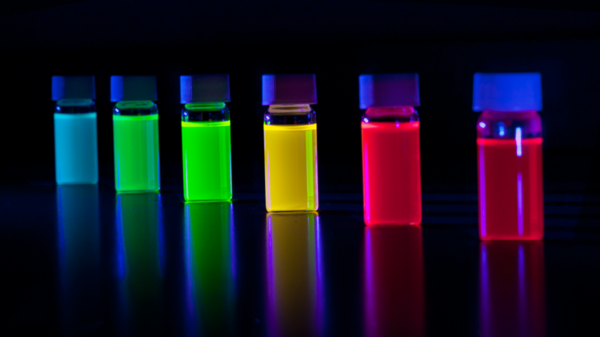Solving the Stability Issues of Perovskite QDs
Perovskite quantum dots (QDs) are unique semiconductor materials with mineralogical compositions distinct from established QDs. The most common formulations are based on indium phosphide (InP) or cadmium selenide (CdSe) technology, each of which is limited in performance or service longevity. Indium phosphide QDs have grown in popularity due to the hazardous nature of cadmium in manufacturing environments, yet recent research suggests that indium phosphide should be regulated to at least the same standards as cadmium.
Indium phosphide QDs remain unregulated due to a speculative RoHS exemption. This allows the use of indium phosphide in manufacturing due to the technological importance of the material and the apparent lack of alternatives. However, perovskite QDs have emerged as a superior substitute to these established materials. They represent significantly improved optical qualities and performance but are conventionally unstable, which makes manufacturing problematic.

Stability Issues of Perovskite QDs
The term ‘perovskite’ refers to the crystal structure of QDs with the general formula ABX3. This uses a monovalent halide to ionically bond the cations of the crystal structure, which can be metallic, organic, or inorganic. Although versatile in their potential chemical compositions, perovskite QDs represent weak binding strengths compared to alternative materials. This typically renders the nanocrystals unstable, with high solubility in water.
Scientific literature has lamented the stability issues of perovskite QDs, as they represent a significant step forward in quantum dot technology in all other aspects. Improving this stability could constitute a profound change in the electronics sector, representing enhancements in the photoelectronic and mechanical properties of an extensive range of emerging electrical devices.
Avantama’s Stable Perovskites
Improving the stability of perovskite QDs has been a priority at Avantama for years. This work has been elaborate and multi-faceted, requiring research into the behavior of various QD compositions in relation to humidity, oxygen, water, and fluctuating temperatures.
One approach to enhancing the stability of perovskite QDs is composition doping. We have successfully developed a flexible nanoparticle engineering process capable of synthesizing custom perovskites doped with stabilizing elements. This has been taken a step further with the establishment of a proprietary encapsulation technology. Using this in conjunction with the fine-tuning and optimization of ligands and complex resin compositions has officially stabilized perovskite QD systems for nanoparticle dispersion.
Avantama is the first company worldwide to officially solve the stability issues of perovskite QDs, enabling manufacturing of enhanced electronics with low risk of mechanical degradation due to standard operating conditions. In terms of manufacturing, this translates into the highest possible efficiency of quantum dot technology and new levels of performance in printed electronics.
If you would like any more information Avantama’s stabilized perovskite QDs, please do not hesitate to contact us.